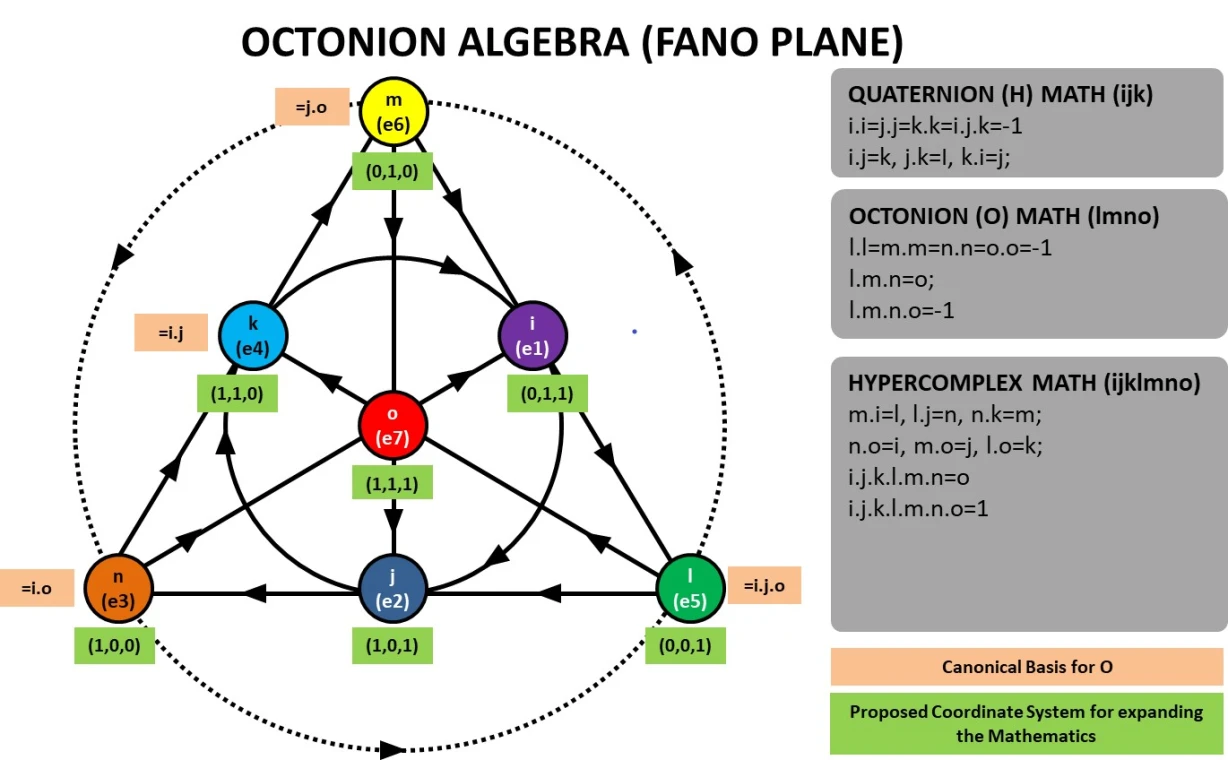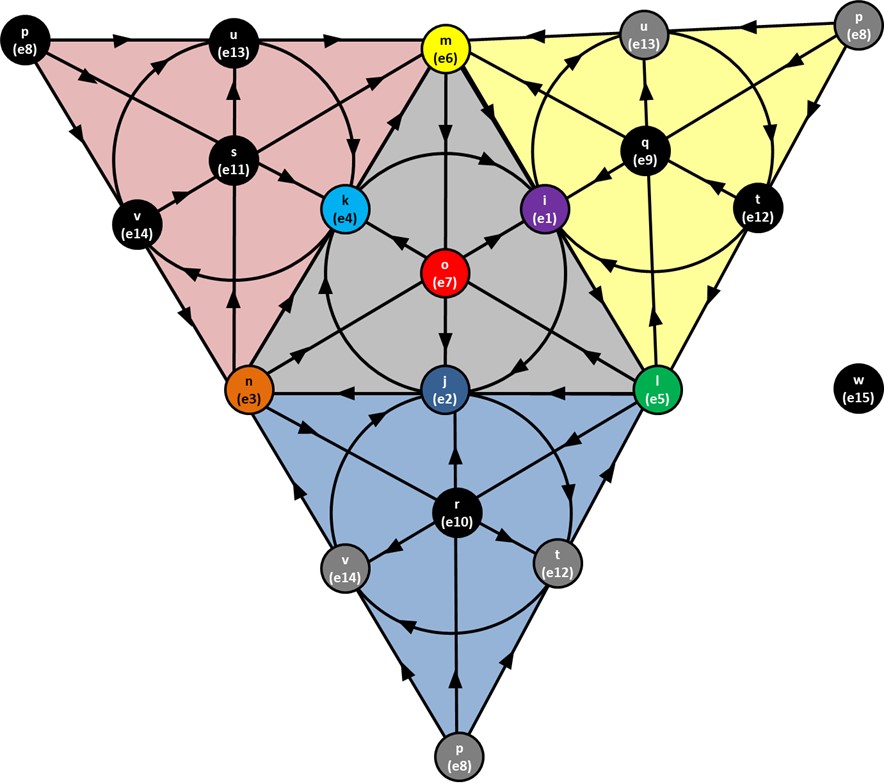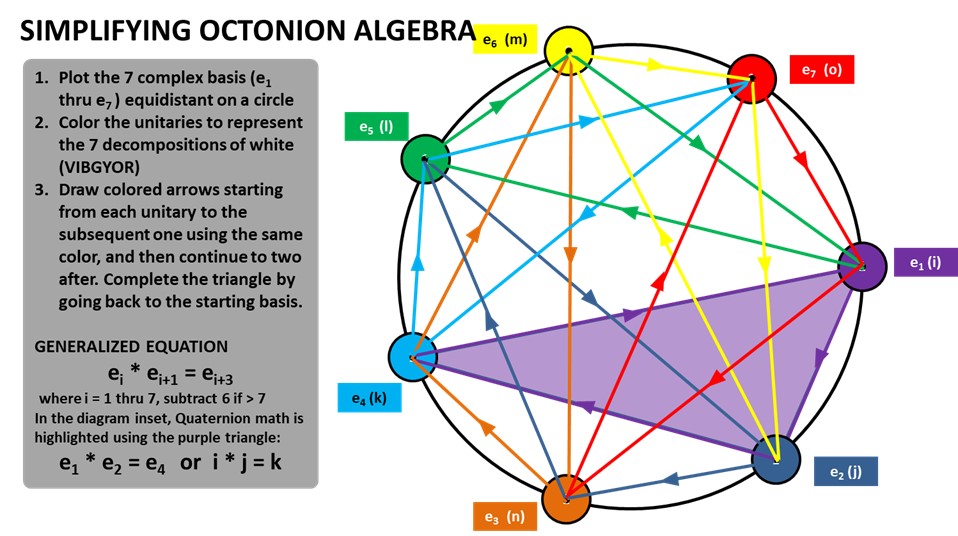Octonions - eight-dimensional hypercomplex numbers used in theoretical physics with a number of counterintuitive properties.

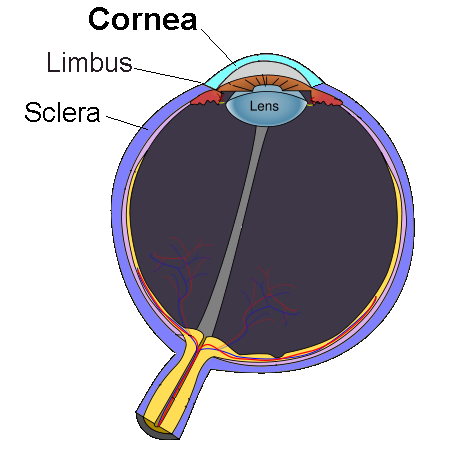
Octonions can be understood as self-referential biquaternions that naturally model phenomena like vision - imagine a sphere (like an eye) that maintains its geometric properties while having both transparent and opaque regions. Just as your eye uses its lens to transform 3D space onto a 2D retinal surface and then encodes this into 1D neural signals, octonions provide a mathematical framework for this kind of dimensional reduction through self-reference. The self-dual property of octonions (being their own mirror image mathematically) enables them to simultaneously represent both the spatial domain (like the physical structure of the eye) and the frequency domain (like the neural encoding of visual information), making them uniquely suited for modeling systems that need to transform between different dimensional representations while preserving essential geometric properties.
The Peculiar Math That Could Underlie the Laws of Nature
New findings are fueling an old suspicion that fundamental particles and forces spring from strange eight-part numbers called “octonions.”
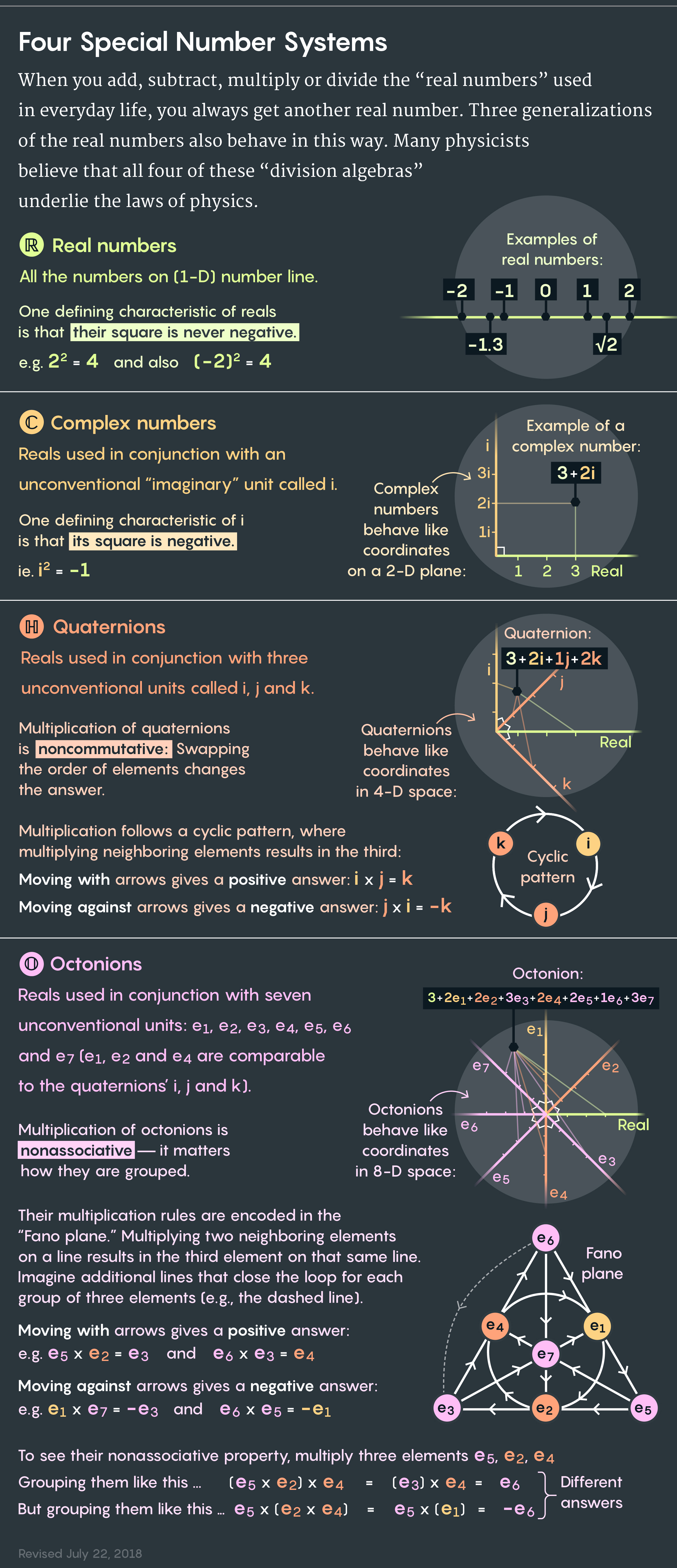
The Octonion Math That Could Underpin Physics
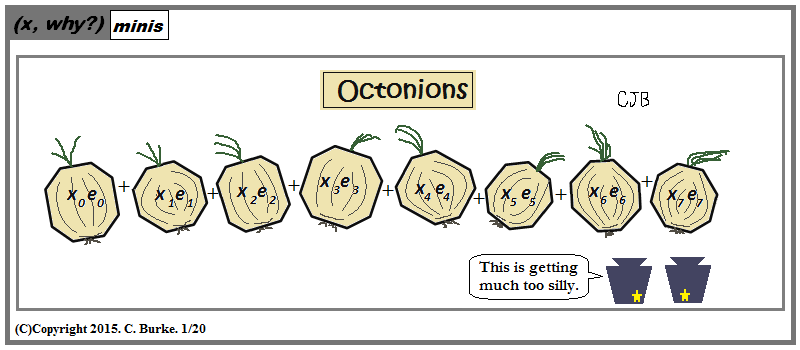
“The real numbers are the dependable breadwinner of the family, the complete ordered field we all rely on. The complex numbers are a slightly flashier but still respectable younger brother: not ordered, but algebraically complete. The quaternions, being noncommutative, are the eccentric cousin who is shunned at important family gatherings. But the octonions are the crazy old uncle nobody lets out of the attic: they are nonassociative.” – John Baez
Fun Fact: Octonions are the last number system in the Cayley-Dickson construction that still forms a division algebra (meaning you can divide by non-zero elements). If you go beyond octonions (to sedenions), you lose even more properties!
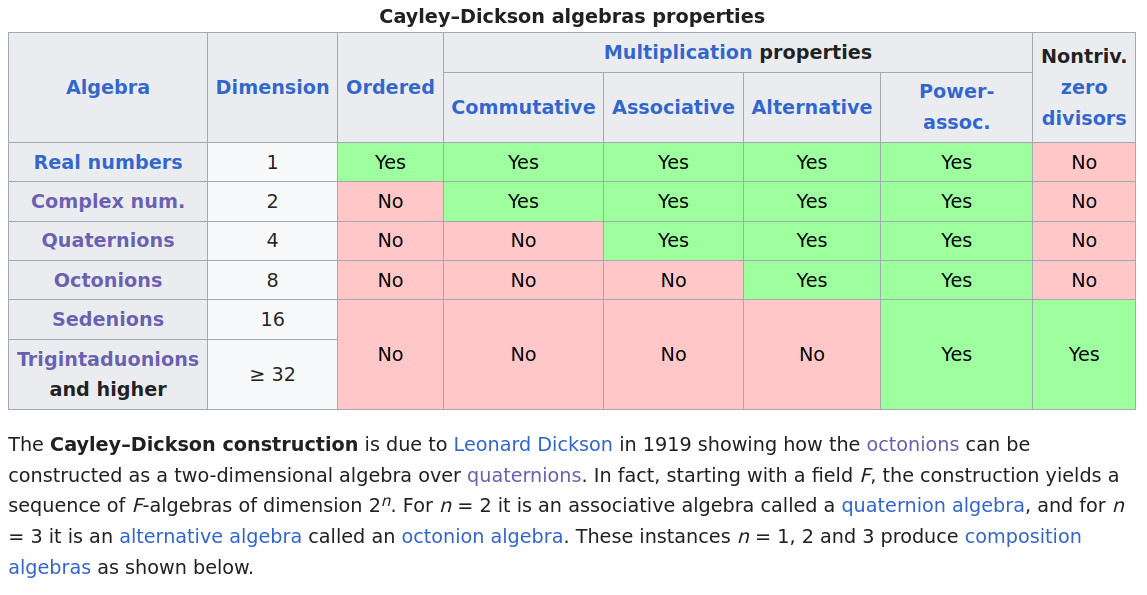
Hypercomplex Math and the Standard Model
